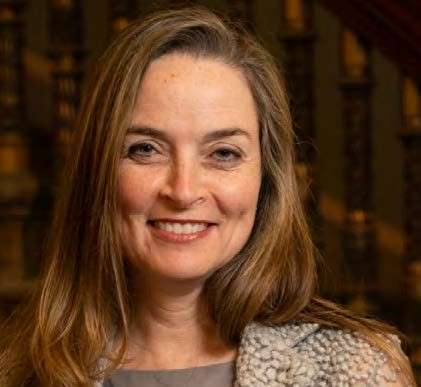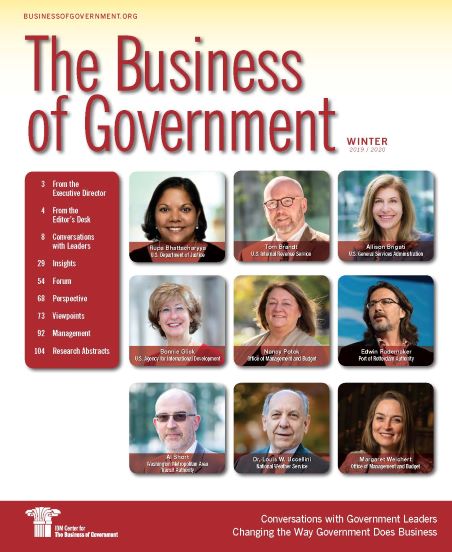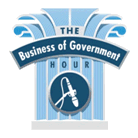
Modernizing Government to Meet 21st Century Realities

Margaret Weichert, deputy director for Management, Office of Management and Budget (OMB), joined me on The Business of Government Hour to discuss the Trump administration’s vision for modernizing the U.S. federal government to meet the mission, service, and stewardship realities of the 21st century. This is an excerpt of our conversation.
I lead the management side of OMB, which develops and executes a governmentwide management agenda that includes information technology, financial management, procurement, performance, and human resources. The management side of OMB is comprised of offices that oversee and coordinate the administration’s procurement, financial management, e-government, performance and personnel management, and information and regulatory policies.
On Transforming How Government Works
Our vision for government modernization as outlined in the President’s Management Agenda (PMA) started by focusing on those government serves—our customers, the citizen who use government services. Trust in government is at an all-time low. We wanted to understand the causes and identify ways to modernize and improve how government delivers on its various missions. We looked at specific functions and sought to identify where government agencies are failing to connect.
Fundamentally, this failing relates to our service delivery and a business model, if you will, that has its roots in fighting the Cold War with process and institutional approaches dating back to the 1950s. This operational model is far from agile. In the 21st century, agility powered by IT, powered by data, and powered by people is how leading players execute, differentiate, and build trust.
Many of the jobs we can’t fill today, nobody could have conceived of even 10 years ago, let alone 50 years ago. How we can acquire goods and services has changed with online marketplaces that provide you real-time information about both prices and activity. The way we hire and compensate hasn’t kept up with what is consider commonplace today.
Rather than pursue short-term fixes that quickly become outdated, we initially focused on investing in deep-seated transformation through the PMA centering on:
- Deliver mission outcomes
- Provide excellent service
- Effectively steward taxpayer dollars
To move from vision to action, the administration identified the need to modernize several key drivers of transform
- Modern information technology
- Data, accountability, and transparency
- Building a modern workforce
In order to advance change across the federal enterprise, we established Cross-Agency Priority, or CAP, goals for each of these three key areas. We have a list of priorities under each. I invite you to visit performance.gov for more detail on each of these goals as well as their priorities. There you can get a sense of what is being done and the quarterly progress made under each goal.
On Optimizing Across the Federal Enterprise
Modernizing government for the 21st century involves getting the right people in the right jobs at the right time in order to focus on mission, service, and stewardship. Often when we talk about personnel management in the federal government, we tend to get lost in the mechanics of getting people in and out of government. Sometimes focusing on the mechanics and process we can lose sight of our overall purpose: why we are here to begin with. Keeping the mission of government front and center is key.
For a period of time, I was also the acting director of the U.S. Office of Personnel Management. This role, which tends to focus on human capital from an operational perspective, complemented my OMB role where I approach government policy, including HR, from a strategic perspective. Having both perspectives afforded me an opportunity to look at the personnel function from end to end, finding more effective ways to help federal agencies address the complex and critical human capital challenges they face. Doing both roles, I also began to see the importance of jettisoning siloes and working towards optimization across agencies, whether doing IT modernization, personnel management, procurement, or leveraging data.
On the Technology Modernization Fund
The Technology Modernization Fund (TMF) was authorized by Congress as a mechanism to finance technology modernization efforts across the federal government. It is an innovative funding model that allows agencies to accelerate key IT modernization projects. It seeks to enable agencies to reimagine and transform the way they use technology to deliver their mission and services to the American public in an effective, efficient, and secure manner. We’re making investments in incremental, agile ways, not spending millions on critical IT and then having the agencies come back for more monies when they’ve proven it out.
The fiscal year funding of $100 million followed by $25 million in 2019 has enabled us to fund projects with U.S. Department of Agriculture (USDA), U.S. Department of Housing and Urban Development (HUD), and U.S. General Services Administration (GSA), along with a host of other agencies. USDA’s Farmers.gov was one of the earliest projects seeking to provide a one-stop-shop for self-service applications, educational materials, and business tools for farmers, ranchers, conservationists, and private foresters.
With this project, the department has made incredible strides towards modernizing their core infrastructure and becoming much more service oriented to support farmers, producers, and ranchers across the country. The fund was designed to have initially funded project payback the fund. This way the fund wouldn’t solely rely on annual appropriations. Some of the earlier funded proposals are starting to be set towards repayment. If you’d like more detailed information on the TMF, go to tmf.cio.gov.
On Establishing Government Effectiveness Advanced Research Centers
When I came from the private sector to government, I noticed at-risk capital from the private sector wasn’t really being deployed to help government with its unique management challenges. Let me provide some context.
Working with the General Services Administration (GSA), we launched a competition to create a GEAR Center to address challenges facing the federal government. The intent is to have the centers provide the federal government with the opportunity to not only catch up to where the private sector services and capabilities are today, but also to lay the groundwork for where government operations and services need to be in five, ten, twenty years or more. It would provide capacity to explore questions concerning how government can best harness technological advances to address evolving challenges concerning citizen interactions with the government, federal workforce skill/reskilling requirements, the leveraging of big data, and collaboration with the private sector via grantmaking, procurement, and public-private partnerships.
On September 10, 2019, OMB along with GSA announced three grand prize winners of the GEAR challenge. Each winner receives an award of $300,000 each. Five honorable mentions were also selected from the pool of highly competitive applicants. The grand prize winners will focus on such topics as cybersecurity workforce collaboration, data for impact, and data and evidence for government and academic impact. Our hope is once we get the GEAR Centers fully launched, we can fund with capital that would come in from the private sector as well as from grants and other government funding sources.








